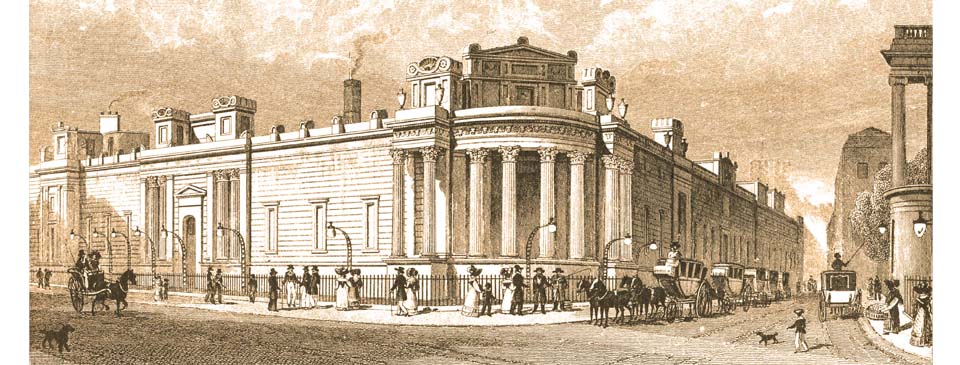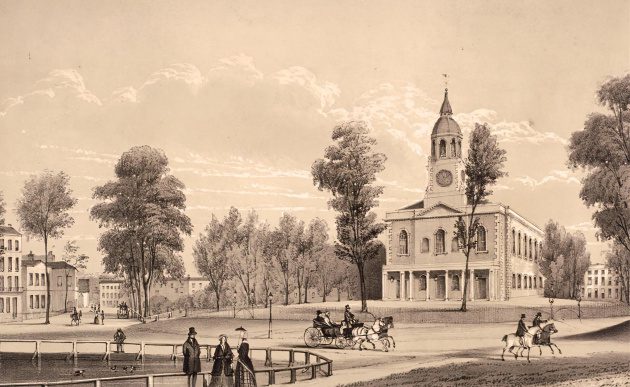In brief – London in the Age of Improvement

The new Bank of England. It had originally opened on the current site in Threadneedle Street in 1734, at what was then the house and garden of its first governor, Sir John Houblon. It was rebuilt between 1788 and 1833 according to the design of Sir John Soane, shown in this picture by Thomas H. Shepherd from 1827. Soane’s building was largely replaced in the 1920s.
When Nash rebuilt the Opera House he also added a new covered shopping centre, known as an ‘arcade’, to its rear. Another was created by Lord George Cavendish as part of his remodeling of Burlington House at Piccadilly between 1815 and 1819. The market at Covent Garden was originally open-air but in 1828 the Duke of Bedford erected a new building in the centre of the piazza, with at that time a central arcade of shops. On either side were rows of shops, between which were open courtyards.
Non-conformist chapels, particularly those of the Methodists, continued to be built at a faster rate than those of the Church of England. A group of laymen instigated a new Act of Parliament, similar to the Fifty Churches Act of a hundred years earlier, with a view to the Government paying for new Anglican churches to be built in London. It stipulated a particular budget – one million pounds – rather than a number of churches and led to the most dramatic period of church-building, counted in the number of new churches in a period of time, ever achieved in London. During the years 1822 to 1825 almost thirty were completed, most designed to hold a congregation of around two thousand.
The Prince Regent became King George IV when his father died in 1820. From 1825 he commissioned Nash to enlarge Buckingham House into a major six-hundred room palace but continually changed his mind about the design. The cost escalated and it remained unfinished when George died in 1830, at which time Nash was fired from the project. The new monarch, George’s younger brother William IV, lived instead at the newly-built Clarence House throughout his short reign.
At about the same time as Nash’s work was in progress at Buckingham House, the Office of Woods and Forests was working on a series of gates, railings and lodges around Hyde Park. The authorities commissioned their talented architect, Decimus Burton, to design a pair of grand gates facing each other across the Kensington to London road, one into Hyde Park and the other into Green Park, forming a processional route from Buckingham Palace to Kensington Palace. Although much altered since, it is what has become known as Hyde Park Corner.
The population size of London continued to grow rapidly throughout the century, made possible because of new forms of transport. The first horse-drawn omnibuses began operating in 1829, introduced to London by George Shillibeer who conceived the idea while in Paris. Initially the six pence fare was too expensive for the average working person but a price-war reduced the cost of a journey to one penny and they became an affordable form of transport for the masses. By the 1830s routes connected all London’s suburbs with the centre of the city. If people needed to travel for a brief distance in or out of London they could take a short-stage coach, for which there were regular services to many destinations. The coaches were pulled by four horses and carried between four and six people inside and twelve on the outside. The journeys were slow and expensive, often with many stops en-route. In 1825 there were over one thousand operating from the City and West End, making over 3,000 journeys per day.


